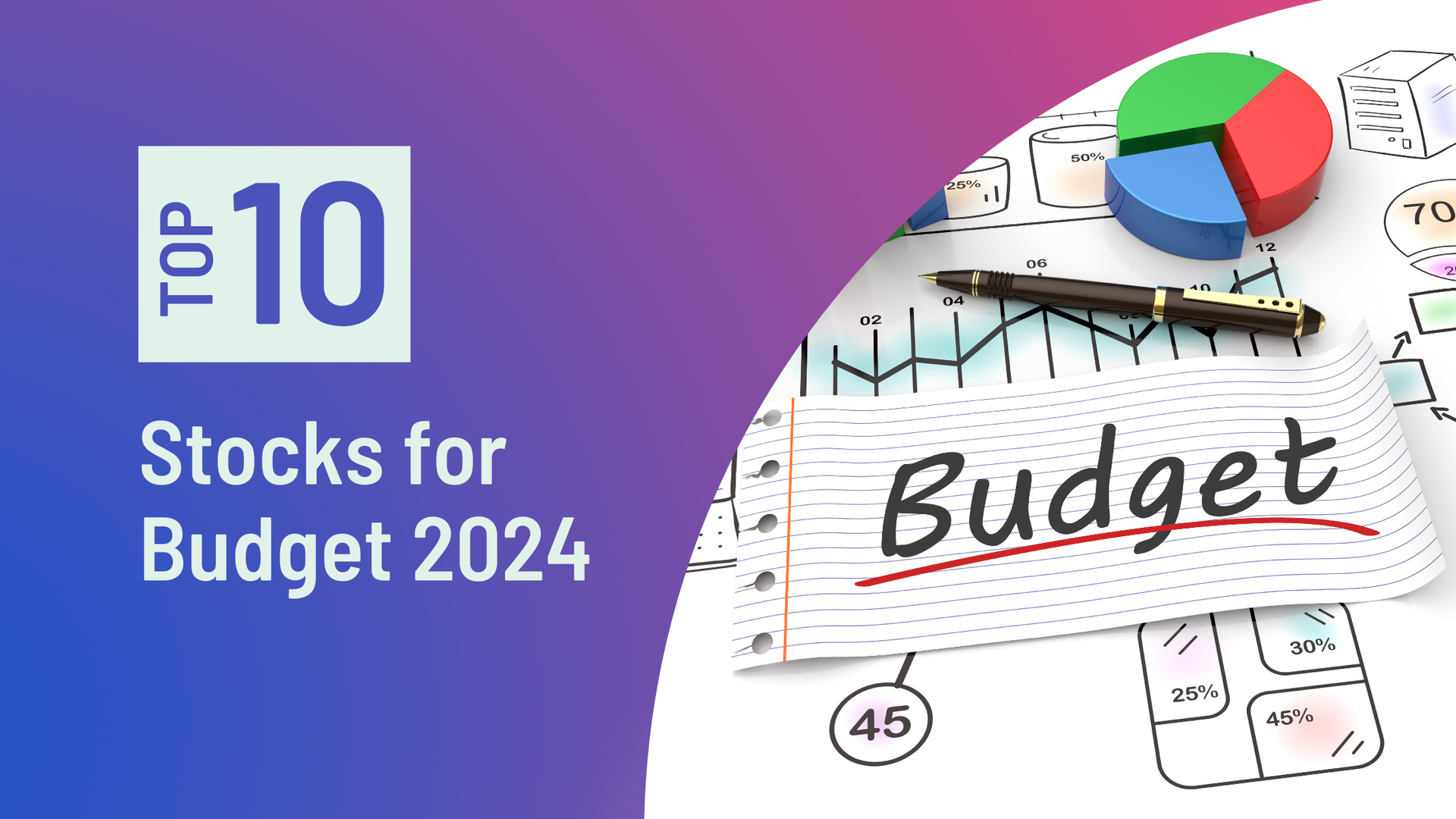Welcome to Our Blogs!
We’ve curated a list of essential topics to help you make informed about latest trends
By Santhosh S
•
January 26, 2025
9:30 AM Strategy for Intraday Trading Hello everyone, and welcome back to our intraday trading series! In this blog post, I'll explain the 9:30 AM strategy for intraday trading. Disclaimer: I am not a SEBI-registered trader. These strategies are based on my experience, so please back-test them and apply your strategies accordingly. What is the 9:30 AM Strategy? The 9:30 AM strategy involves using the first 15 minutes of the trading day to identify potential entry and exit points. Here’s how it works: 5-Minute Candle Analysis Start by analyzing the 5-minute candles from 9:15 AM to 9:30 AM. This includes the 9:15, 9:20, and 9:25 candles. Mark the high and low of these three candles. Identify Breakout Points Wait for a breakout either above the high or below the low of the marked candles. The first candle to close above the high or below the low is your signal candle. Confirmation Candle Wait for the next candle to confirm the breakout by moving in the same direction as the signal candle. If the confirmation candle breaks the high or low of the signal candle, it indicates a potential trade opportunity. Take the Trade Enter the trade based on the direction of the confirmation candle. Set your stop-loss slightly above or below the opposite end of the signal candle to manage risk. Select Suitable Stocks Focus on stocks with a daily price movement between 1% to 2%. This ensures manageable volatility and reduces the risk of significant capital loss. Practical Example Example 1: On January 24, 2025, mark the high and low of the 9:15, 9:20, and 9:25 candles. If the low is broken by the next candle, wait for confirmation. Once confirmed, enter a sell trade and set your stop-loss. Example 2: For another stock, mark the high and low as before. If the high is broken and confirmed, enter a buy trade and set your stop-loss accordingly. By following this strategy, you can effectively capitalize on early market volatility. Always remember to practice discipline and patience, and happy trading! Feel free to leave your questions in the comments, and I'll be happy to answer them. 📈💼
By Santhosh S
•
January 26, 2025
Money Management for Intraday Trading Hello everyone, good day! Welcome back to our series on intraday trading. In this blog post, we'll discuss the crucial topic of money management. Disclaimer: I am not a SEBI-registered trader or influencer. I am sharing my knowledge based on my experience. Importance of Money Management Money management is vital when it comes to trading in the stock market. If someone tells you that you can double, triple, or quintuple your money easily, do not fall for it. Treat the stock market as a business, not gambling. Key Principles of Money Management Avoid Loans Do not take loans for trading until you have become a professional trader. Use only your own capital, which should be a small, manageable amount that you can afford to lose. Start Small Begin with a small amount of capital based on your financial capacity. Invest this money in trading after you have learned the basics of the stock market. Allocation Strategy If you have a total investment of ₹10,000, start by using only 10% (₹1,000) for trading. Once you make a profit, reinvest 70% of the profit back into your capital and keep 30% as a buffer for potential losses. Compound Your Gains Reinvest your profits to compound your gains over time. This approach will help grow your capital steadily and sustainably. Practical Example Suppose you have ₹10,000 to invest. Initially, use ₹1,000 for trading. If you make a profit, reinvest 70% and keep 30% as a buffer. Final Thoughts Remember, there is no one-size-fits-all strategy. Everyone can create their own strategies based on their experiences. A success rate of 80% is considered excellent in the stock market. Stay disciplined and stick to your strategy. By following these money management principles, you can navigate the stock market more effectively and increase your chances of long-term success. Happy trading! 📈💼
By Santhosh S
•
January 26, 2025
Developing the Right Mindset for Intraday Trading Hello everyone! Welcome back to Sandy E-learning. Continuing from our previous discussions on intraday trading prerequisites, let's now focus on developing the right mindset for trading. Disclaimer: I am not a SEBI-registered trader. I am sharing my knowledge based on my experience. If I make any mistakes, please let me know, and I will correct them. Trading Mindset There's a quote I live by: "Trading is a business, not gambling." It's important to remember this before starting your trading journey. Why Mindset Matters As mentioned in previous videos, nine out of ten traders fail. To be part of the successful 10%, you need the right mindset. You cannot expect to earn 100% profits every day in the stock market. Avoid treating trading like a lottery. Instead, approach it as a business. Profit Expectations Set realistic profit expectations. For example, if you aim for a 1% stock movement daily, you can achieve a 5% profit in a single trade. Over a month (20 trading sessions), this could result in a 100% profit on your capital. Patience is key. Key Principles Avoid Greed Don't chase unrealistic profit margins. A steady, consistent approach yields better long-term results. Patience Wait for the right opportunities to enter and exit trades. Avoid impulsive decisions. Weekly and Monthly Analysis Instead of daily profit calculations, focus on weekly and monthly performance. A 20-30% monthly profit indicates a successful trader. Control Emotions Money can evoke strong emotions. Avoid making trades based on greed or fear. Stick to your strategy and remain disciplined. Brokerage Charges Remember to account for brokerage charges. For example, if you earn ₹1,000 in profit, but brokerage fees are ₹300, your net profit is only ₹700. By maintaining a business mindset and focusing on percentage-based profits, you can navigate the stock market more effectively. Always remember that trading is a disciplined business, not a gamble. I hope this helps clarify how to approach intraday trading with the right mindset. Happy trading! 📈💼 Feel free to leave your questions in the comments, and I'll be happy to answer them.
By Santhosh S
•
January 26, 2025
Prerequisites for Intraday Trading Hello everyone! Welcome back to Sandy E-learning. In this blog post, we'll discuss the essential prerequisites for intraday trading. Disclaimer: I am not a SEBI-registered trader. I am sharing my knowledge based on my experience. If I am wrong, please let me know, and I will correct it. Essential Prerequisites Trading Account You need a trading account with a platform such as Groww, Zerodha, or Angel One. There are many other trading platforms available, so choose one that suits your needs. Knowledge of the Stock Market Before diving into intraday trading, it's crucial to understand the basics of the stock market. Study concepts like PE ratio, ROE, earnings, penny stocks, and market trends. Utilize resources such as YouTube to gain this knowledge. Experience as an Investor If you're new to the stock market, start by being an investor for two to three months. Invest a small amount of capital and observe market trends, candlestick patterns, and trading behaviors. This foundational experience will prepare you for intraday trading. Avoid Loans Never trade with borrowed money. Use only the capital you can afford to lose. Trading with excessive capital or loans can lead to significant financial losses. Develop a Strategy Focus on mastering one or two trading strategies rather than trying multiple strategies. Become proficient in your chosen strategies, and avoid relying on external sources like Telegram or WhatsApp channels for buy/sell decisions. Gain Practical Experience Gain practical experience by trading with a small amount of capital. This hands-on approach is more effective than paper trading. Learn from each trade and gradually increase your capital as you gain confidence. Additional Tips Attend Workshops and Sessions Participate in workshops and sessions to learn from experienced traders. Networking with seasoned traders can provide valuable insights and tips. Discipline and Emotional Control Intraday trading requires discipline and emotional control. Develop a trading routine, stick to your strategies, and avoid impulsive decisions. Remember, trading is a business, not gambling. With the right knowledge, strategy, and discipline, you can succeed in the world of intraday trading. Stay tuned for our next video, and happy trading! Feel free to leave your questions in the comments, and I'll be happy to answer them.Prerequisites for Intraday Trading
By Santhosh S
•
January 26, 2025
What is Intraday Trading? Welcome back to Sandy e-learning! In this blog post, we're going to delve into the world of intraday trading. Before we start, here's a quick disclaimer: I am not a SEBI-registered trader. I'm sharing my knowledge based on my experience, so always back-test and gain experience before relying on my teachings. Test it out and see if it works for you. What is Intraday Trading? Intraday trading involves buying and selling financial instruments within the same trading day. Unlike investors who hold stocks or futures for the long term, intraday traders capitalize on short-term price movements. Investor vs. Trader An investor holds stocks or futures (F&O) for more than one day, often ignoring daily market fluctuations. They invest with a long-term perspective and sell when they achieve their desired profit. On the other hand, a trader buys and sells within the same day, booking profits from short-term price changes. For example, a trader might buy a stock at 9:15 AM and sell it at 9:17 AM for a small percentage profit. Understanding Intraday Trading Intraday trading means completing all transactions within the same day. In India, the stock market operates from 9:15 AM to 3:30 PM. Trades must be completed before 3:20 PM to avoid automatic closure by brokers. Advantages of Intraday Trading Profit from Both Rising and Falling Markets : You can buy low and sell high, or sell high and buy low to profit from price movements. Leverage : Intraday traders can buy more stocks with less capital due to margin trading. For example, with ₹5,000, you can buy five stocks for delivery trading or up to 25 stocks for intraday trading. Example Let's say a stock like Reliance is trading at ₹1,000. If you expect the price to rise by ₹10, you can buy at ₹1,000 and sell at ₹1,010. Conversely, if you expect the price to fall to ₹980, you can sell first and buy later at the lower price, pocketing the difference. Intraday trading provides opportunities for higher percentage gains compared to holding stocks for delivery. If a stock rises by 1%, the intraday profit might be 5%. Remember, trading is a business, not gambling. Always back-test strategies and maintain a disciplined approach. Happy trading! 📈💼Understanding Intraday Trading
By Santhosh S
•
January 26, 2025
Understanding Intraday Trading Good day, everyone! Welcome to our series on intraday trading. In this blog, we'll explore what intraday trading is, various strategies, and how to successfully execute intraday trades. Let's get started with a brief introduction about myself. I am not a SEBI-registered trader, but I am sharing my knowledge and experience with you. Remember to always back-test and gain experience before relying on any teaching, including mine. Test it out, and if it works for you, feel free to use it. What to Expect from This Series What is Intraday Trading? We'll begin by defining intraday trading and explaining how it works. You'll learn how intraday trading differs from normal trading and investing. Prerequisites for Intraday Trading Next, we'll cover the essential prerequisites needed to start intraday trading, such as knowledge, capital, and trading platforms. Trading Mindset Having the right mindset is crucial for success. We'll discuss the dos and don'ts of trading, and I'll share tips based on my experience to help you develop a trader's mindset. Money Management Effective money management is key to preserving your capital and minimizing losses. I'll provide tips on managing your money, saving your capital, and avoiding unnecessary losses. Trading Strategies Finally, we'll delve into various trading strategies. I'll introduce you to different strategies, rank them based on my experience, and encourage you to back-test them. Apply these strategies to become a successful trader. Thank you for joining me on this journey into the world of intraday trading. Stay tuned for more insights, tips, and strategies. Happy trading! 📈💼

By Santhosh S
•
July 18, 2024
Discover the top 10 stocks to watch for Budget 2024. Get expert insights and analysis to help you make informed investment decisions and stay ahead in the market. Learn about key factors influencing these stocks and potential growth opportunities in the coming fiscal year

